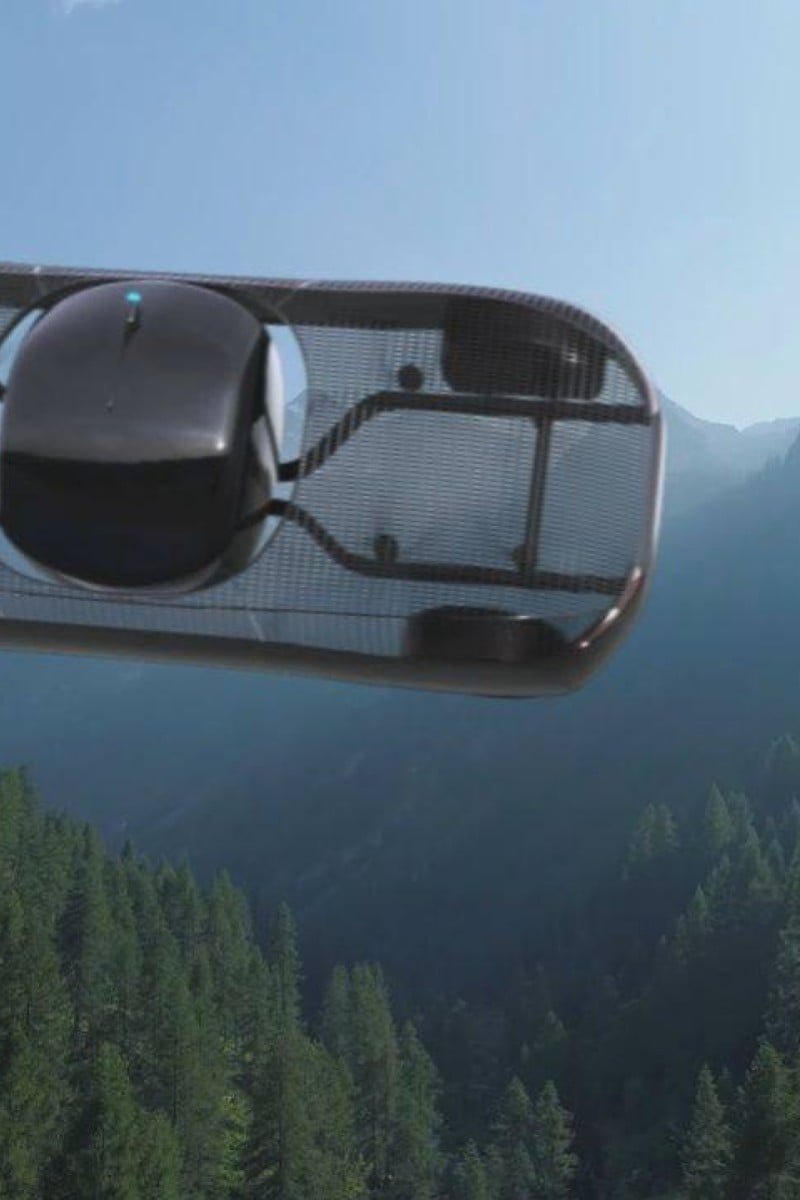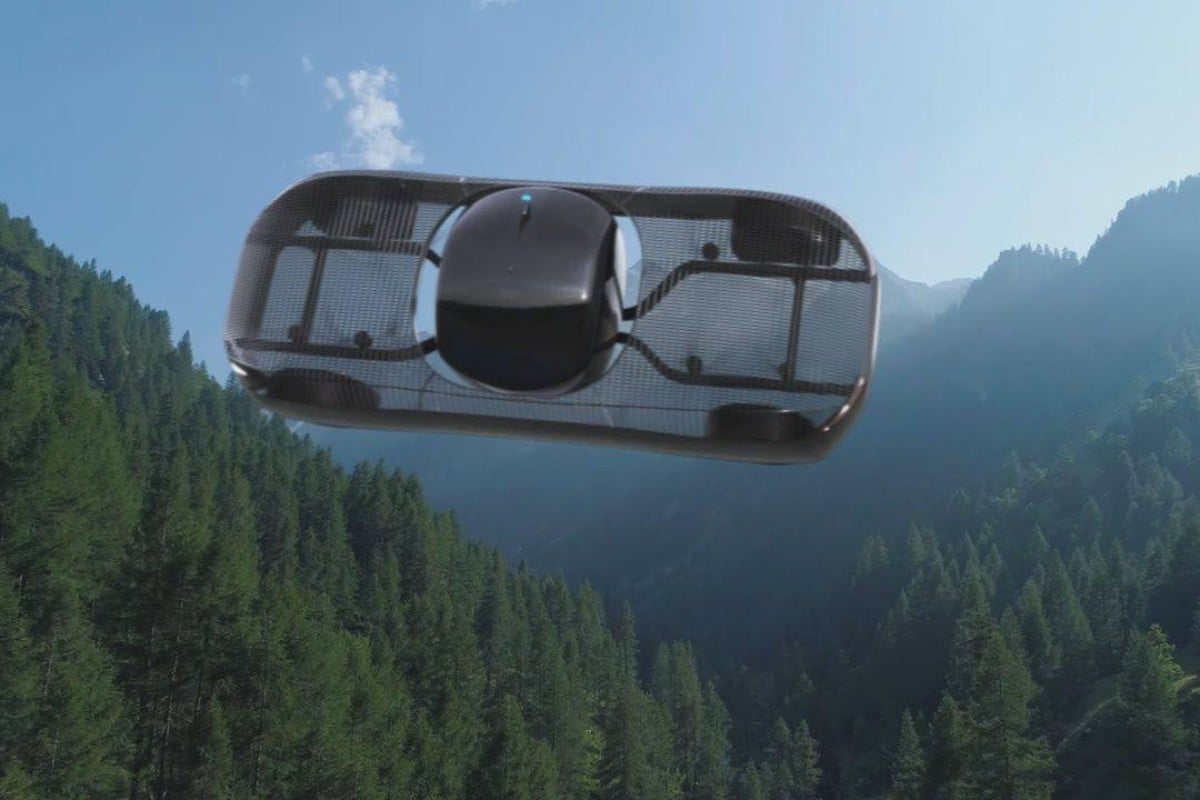
Sky’s the limit: 5 ways electric vehicles can supercharge how we move, from flying over traffic to driving in water
- Alef Aeronautics has received approval to run tests for its Model A EV, which can be flown in the air and driven on roads
- Other car makers like Nio and China-based BYD’s luxury brand, Yangwang, are setting new standards with their jumping and ‘crab-walking’ vehicles

 Alef Aeronautics plans to release its flying car in 2025. Photo: Alef Aeronautics
Alef Aeronautics plans to release its flying car in 2025. Photo: Alef Aeronautics In a few years, flying cars might not be something you only see at Disneyland or in films, as modern carmakers are eager to bring our futuristic dreams into reality.
But companies aren’t only focused on building awe-inspiring vehicles – they’re also concerned about the state of our future and reducing fossil fuel reliance by crafting these innovative features onto electric vehicles.
From crab-walking to swimming, here are five ways electric vehicles could shake up the way we travel.
AI threat may be ‘more urgent’ than climate change, says expert
1. Flying above traffic – Model A by Alef Aeronautics
Founded in 2015, Alef Aeronautics is working to develop an electric vehicle (EV) that can be flown in the air and driven on roads. Last week, the US-based company received the green light from the US Federal Aviation Administration to run tests for its Model A EV in the sky.
If this flying car is successful, traffic jams would no longer delay your plans because the sky would be the new road. According to Alef’s website, the two-seater “can fly forward above the obstacles until a desired destination is reached”.
Although the car is limited to speeds of just 25mph (40km/h) on the road, “if a driver needs a faster route, a driver will use Alef’s flight capabilities”, the website says.
The expected price for the car is about US$300,000 (HK$2.35 million), and the company hopes to make its first delivery to customers by the end of 2025.
2. Jumping over every obstacle – Yangwang U9 by BYD
At this year’s Shanghai Auto Show in April, BYD’s Yangwang U9 sports car entered the stage dancing and jumping.
The astonishing feat is due to the U9’s body control system, DiSus, which is meant to improve agility and safety, for example, by getting drivers unstuck from tricky road conditions and helping the car respond more quickly to potentially dangerous situations.
According to BYD, other features of this car include being able to drive on three wheels, hop into the air, and accelerate from zero to 100km/h in two seconds. The car will enter production later this year and will cost more than 1 million yuan (HK$1.08 million).
The car is part of the Chinese electric-car maker’s new high-end luxury electric vehicle brand, Yangwang, which translates to “longing”.
“In the … history of innovation, human beings have looked to the sky again and again … giving birth to brilliant technology and civilisation,” the company said in a post last November on Weibo, elaborating on the meaning behind the brand’s name.
3. Driving in water – Yangwang U8 by BYD
This off-road luxury SUV is for the ultimate adventurer. BYD’s Yangwang U8 has driving modes that allow it to operate in water, not to mention navigate ice and snow. It can also spin in place and “crab-walk” sideways to help drivers get out of tight spots.
The U8’s vast array of sensors detects rocks and other potential obstacles and signals to the car to make small height adjustments.
Other than withstanding the brutal forces of nature, the U8 can also solve everyday troubles as well. Its “crab-walk” ability makes parallel parking an easy task, and its 360-degree spin will make U-turns a breeze.
BYD has said the first batch of buyers would receive their U8 vehicles in September. Pre-sales have already started in China revealing the U8’s starting price of 1.098 million yuan.
4. Your living room in a car – Eve by Nio
While Eve may only be a concept car from Shanghai-based EV start-up Nio, it opens a whole new world of imagination for the future of driving.
Eve, which made its debut in 2017, imagines what passengers could do when cars start driving by themselves. People can recline in Eve’s comfy seats to take a nap or admire the sky through huge windows that stretch from the front to the back of the vehicle. All the windows can also display augmented reality experiences, from showing movies to explaining the stars you’re looking at.
An artificially-intelligent assistant, Nomi, uses sensors to cater to how passengers feel. Other features of this concept car include being able to communicate with other cars to facilitate safer and more efficient rides.
5. Battery-swapping electric cars – Nio
The Chinese electric-vehicle start-up has introduced battery-swapping services in hopes of replacing Tesla’s rapid-charging technology.
To use this service, users locate the nearest Power Swap Station, which replaces their car’s depleted battery with a fully charged one in less than five minutes. According to Nio, the 150-kWh battery pack for its ET7 electric car offers a range of more than 1,000km (621 miles) per charge.
Compare this to the Tesla’s Supercharger which takes 15 minutes to top up vehicles to a range of 200 miles (322km).
The downside of battery swapping is that these types of stations are not widespread. Nevertheless, more efficient batteries are key to the future of electric vehicles.
